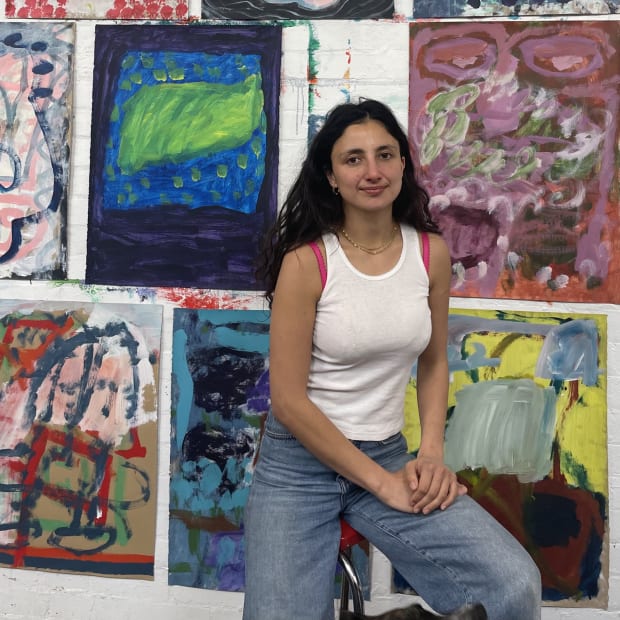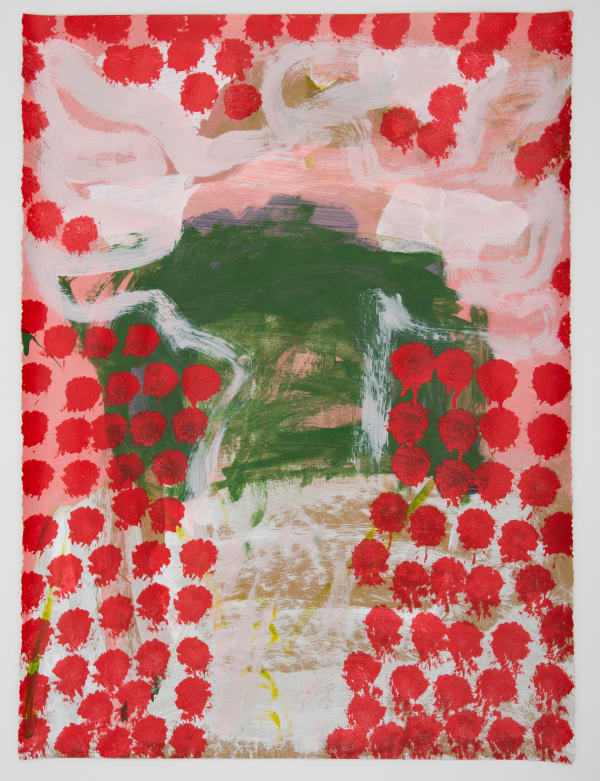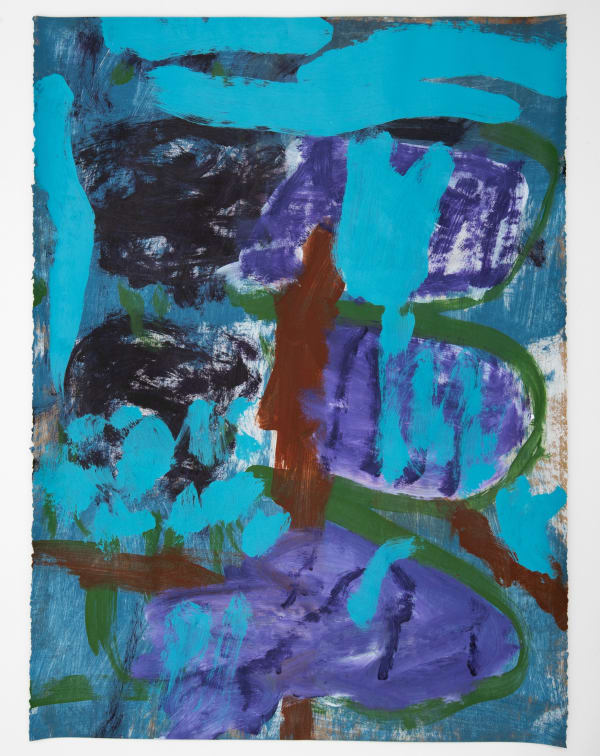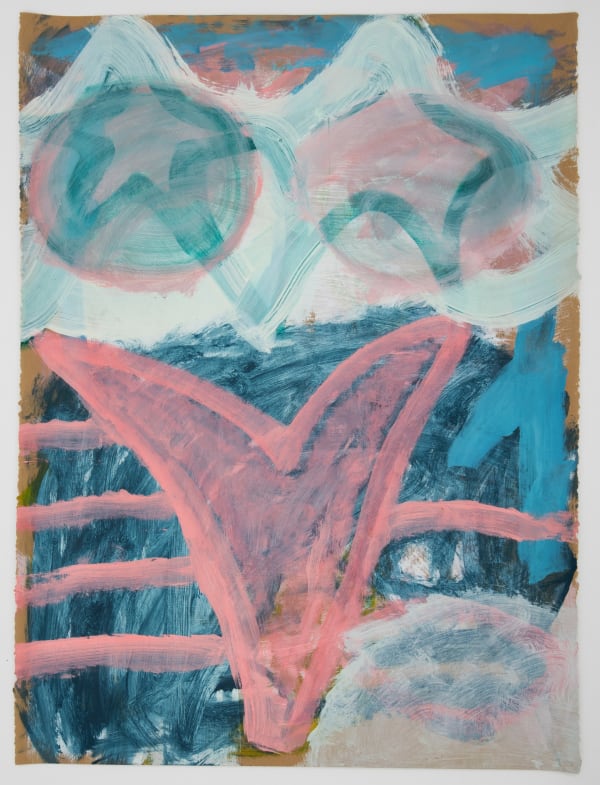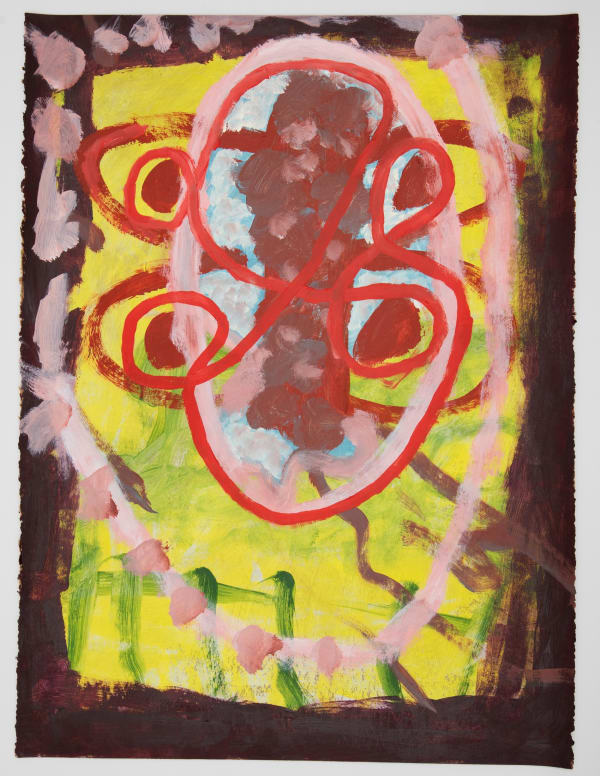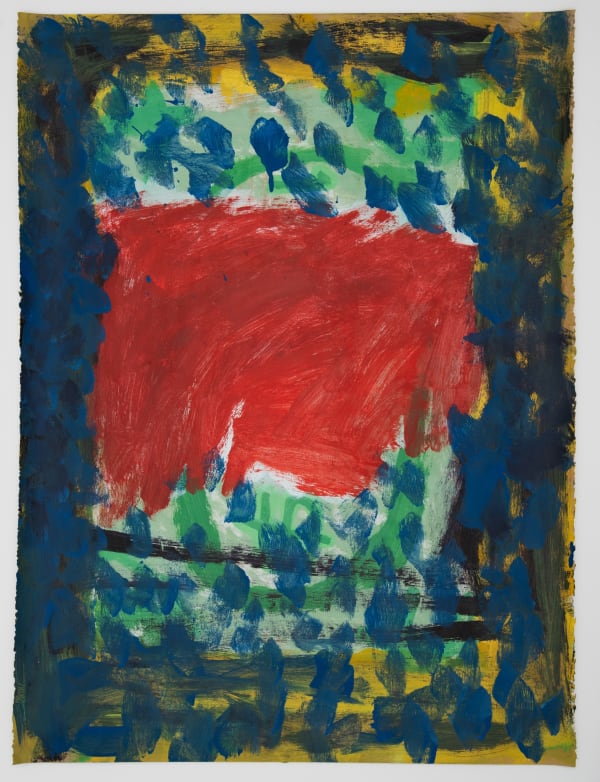-

-
In Dreams and Effigies (to be burnt), destruction is envisioned as a ritual rebirth. A new language emerges from cryptomnesiac tongues
-
DREAMS AND EFFIGIES (TO BE BURNT)
30 SEPTEMBER - 22 OCTOBER 2022
Painting is not a subspecies of written language. It precedes language as a means of visual sign communication, and yet it is language-like in that it shares the notion of syntax. It’s syntax that allows neural algorithms to replicate painting styles. “Deep learning” algorithms trained on object recognition have been developed by a group of researchers at the University of Tübingen, Germany, which can now separate content from style. This separation allows the AI to recast the content of one image in the style of, say, Pablo Picasso. It simply needed to learn the rules about the application of colour, line, texture, and volume that constitute the styles of the canon- definers.
It could be said that a style of painting emerges first as a kind of pidgin language. A simplified amalgam of previously established languages that facilitates rudimentary communication between groups (or generations) that do not share a language. This initial reduction may later form a creole with a fully developed vocabulary and patterned grammar of its own: Cubism, Dada, and so forth. As with pidgin languages, colonialism is often at the core of such developments in painting. Consider Picasso. When he made a fateful visit in 1907 to Musée d’Ethnographie du Tocadéro (Trocadero Museum of Ethnology), he was captivated by a collection of tribal masks. Picasso fused these influences with cues taken from Paul Gauguin who was using Tahitian models and emblems in his art. He integrated these with elements from the Barcelona modernistes, who in turn took elements from the Iberian and Catalan Romanesque art of the 1880s and 90s, and so on and so forth until the colonial comixture became a style of its own.
A creole is born when there are native speakers. The Tubingen AI can learn the syntax of the greats because these artists have long left the pidgin phase behind them. Picasso’s pidgin had already been cast in museo-cultural stone beyond the ethnological confines of his influences. He had his own section of the museum from whence he birthed a new generation of native speakers, and so Cubism became creole.
But what if painting is not your mother tongue? What if you’re unfamiliar with the rules?
Standing by the brown snake, aka the Brisbane River, Georgia Morgan had an apparition of her mother as a sixteen year old, standing by the river that runs through her kampong (village) and separates it from the rubber plantations on the other side. The feeling was something like déjà vu —a superimposition across time and place. Georgia never learnt to speak Tamil, her mother’s language. Her jungle no longer exists and there are no photos for Georgia to reconstruct it in her mind’s eye. At the bank of the brown snake, her vision is pure embodied intuition. Or lawless deep learning.
There is something of this intuition in Georgia’s paintings, a palimpsest of devotional déjà vu. Neither painting nor Tamil is Georgia’s mother tongue, but something subliminal emerges in the doing. A pattern is detected in the psychic data. Her paintings are layered—painted over and started again. In the way that a local council might buff or roll paint over graffiti, the original is obscured but never truly lost or excised. In Dreams and Effigies (to be burnt), destruction is envisioned as a ritual rebirth. A new language emerges from cryptomnesiac tongues.
— Audrey Schmidt -
-

-
-
 Georgia MorganThe bottom of Batu Caves, 2022acrylic on paper, framed76 x 56 cm (paper size)
Georgia MorganThe bottom of Batu Caves, 2022acrylic on paper, framed76 x 56 cm (paper size) -
 Georgia MorganIt’s All in Me , 2022acrylic on paper, framed76 x 56 cm (paper size)
Georgia MorganIt’s All in Me , 2022acrylic on paper, framed76 x 56 cm (paper size) -
 Georgia MorganFalling-Flying, 2022acrylic on paper, framed76 x 56 cm (paper size)
Georgia MorganFalling-Flying, 2022acrylic on paper, framed76 x 56 cm (paper size) -
 Georgia MorganTrue Love is Blind, 2022acrylic on paper, framed76 x 56 cm (paper size)
Georgia MorganTrue Love is Blind, 2022acrylic on paper, framed76 x 56 cm (paper size) -
 Georgia MorganHouse on Fire, 2022acrylic on paper, framed76 x 56 cm (paper size)Sold
Georgia MorganHouse on Fire, 2022acrylic on paper, framed76 x 56 cm (paper size)Sold -
 Georgia MorganWonder Woman, 2022acrylic on paper, framed76 x 56 cm (paper size)
Georgia MorganWonder Woman, 2022acrylic on paper, framed76 x 56 cm (paper size)
-
-

-
-
 Georgia MorganPappathi , 2022acrylic on paper, framed76 x 56 cm (paper size)Sold
Georgia MorganPappathi , 2022acrylic on paper, framed76 x 56 cm (paper size)Sold -
 Georgia MorganSadhu Ascending (Exploding), 2022acrylic on paper, framed76 x 56 cm (paper size)
Georgia MorganSadhu Ascending (Exploding), 2022acrylic on paper, framed76 x 56 cm (paper size) -
 Georgia MorganBust, 2022acrylic on paper, framed76 x 56 cm (paper size)
Georgia MorganBust, 2022acrylic on paper, framed76 x 56 cm (paper size) -
 Georgia MorganFloating, 2022acrylic on paper, framed76 x 56 cm (paper size)
Georgia MorganFloating, 2022acrylic on paper, framed76 x 56 cm (paper size) -
 Georgia MorganPaper Money, 2022acrylic on paper, framed76 x 56 cm (paper size)
Georgia MorganPaper Money, 2022acrylic on paper, framed76 x 56 cm (paper size) -
 Georgia MorganPappathi at Dusk, 2022acrylic on paper, framed76 x 56 cm (paper size)
Georgia MorganPappathi at Dusk, 2022acrylic on paper, framed76 x 56 cm (paper size)
-
-

-
Georgia Morgan (b. Sydney 1992) works with thresholds: an open window, a hole in the fence, a pause for thought in conversation. Her constructions are the building of new and familiar cracks that are portals to memories that are neither hers, nor necessarily real.
Morgan is quickly establishing her voice in contemporary practice through multidisciplinary works that include large-scale site-specific installations, photographs, videos and ceramics. Her work recollects fragmented narratives through the rearrangement of material and architectural hierarchies.
The artist is inventing her own vernacular architecture, making use of found materials, found stories and found rituals. Overlaying, photocopying, stacking and mortaring a multilayered present that is thicker than what is real. Morgan draws freely on the local knowledges of the places that she inhabits as well as places she has never been – places that are dreamed, relayed to her in conversation, rumoured, intuited and invented – she reconstructs them anew creating fantastic dioramas that are as reverent to shrines as they are to carparks. Every work is a site-specific beat poem, a spontaneous readorning of the mundane; transgressive and transformative.
Georgia Morgan lives and works in lutruwita/Tasmania. She was awarded both a Commendation Prize and the People’s Choice Award in the 2020 Churchie Emerging Art Prize, and won the 2021 Tasmanian Women’s Art Prize (Emerging). Her work has most recently been acquired by Artbank.
“Georgia’s image making is located within the textural grittiness of her contemporary life, and whilst ostensibly whimsical, belies a deceptive deftness in conflating personal myth, emblem and dream. The forms do not quite function as mnemonic triggers, as the codes within her work are not focused on remembering. Rather, if Georgia Morgan’s artworks were tools, they could be considered as devices for fathoming.” - Lucy Bleach, 2021
